FESTIVALPROGRAMM BLOG
AUSZÜGE IN DEUTSCHSIMPLICITY - the art of complexity - ARS ELECTRONICA 2006 - Festival für Kunst, Technologie und Gesellschaft - Linz, Do 31. August – Di 5. September
7
Sep
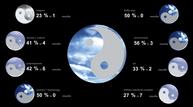 © Media Arsonists
© Media Arsonists
At the Ars Electronica picture archive, you can now view and download great shots of this year's Festival. Click it on and check it out!
1
Sep
The Brucknerhaus in Linz will serve as a broadcast studio for radio station FM4 September 1-3.
FM4 will accompany Ars’ digital investigations this year even more intensively than in the past: the station is setting up a full-blown remote location in the electrolobby to deliver three full afternoons of on-site, on-the-air reportage. Gerlinde Lang will moderate FM4 Connected (2-5 PM) live from the Brucknerhaus beginning on Friday.
So tune in! Or even better: drop by and check it out in person at the FM4 Lounge in the electrolobby!
10
Jun
Prix Ars Electronica | posted by CorneliaSulzbacher | at 11:15:00
Dietmar Offenhuber - Jury Member "Computer Animation / Visual Effects"
Dietmar Offenhuber graduated in architecture at the TU vienna. After first steps in digital media art with the group RELAIS (1995 with Schilcher, Palmetshofer), he considers having received his main education while working at the ars electronica futurelab, where he was a core team member from 1995 until 2004.
After graduation in 2002 Dietmar worked as a key researcher for interactive space at the lab, responsible for the development of exhibitions, interfaces and curatorial concepts.
In 2004 he received a Fellowship from the Japan Foundation for the IAMAS institute in the dept. of prof. Christa Sommerer. From 2004 to 2006 Dietmar Offenhuber served as professor for animation and interactive media at the University of Applied Sciences in Hagenberg.
(Since Fall 2006 he is researcher at the MIT medialab in the sociable media group of prof. Judith Donath.)
One of his main interests is investigating the spaces of the everyday by means of interactive mapping techniques. These endeavors result in videos, interactive installations and mapping projects. A recent collaboration in this area with composers Sam Auinger and Hannes Strobl has been established under the name “stadtmusik”.
Awards include a nomiations for the ZKM’s interantional media art award and for the FEIDAD award, honorable mentions at transmediale and ars electronica.
10
Jun
Prix Ars Electronica | posted by CorneliaSulzbacher | at 09:15:00
Rob Young - Jury Member "Digital Musics"
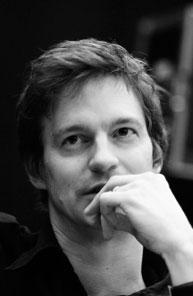 © Norbert Artner
© Norbert Artner
Rob Young is Editor-at-Large of The Wire magazine, and a writer and broadcaster who contributes to The Guardian, Uncut, Frieze and Resonance FM. He is the Editor of Undercurrents: The Hidden Wiring Of Modern Music (Continuum Books 2002) and is currently working on an illustrated 'biography' of Warp Records.
9
Jun
Prix Ars Electronica | posted by CorneliaSulzbacher | at 14:00:00
Stephan Pirker - Jury Member "u19 - freestyle computing"
Stephan Pirker was born in 1971 in Innsbruck and studied sculpture at the Linz University of Art. He has shown his installations and short films at exhibitions in Innsbruck, Bozen, Graz and Linz. Pirker’s "The Singing Skeleton Pilot SSP04" was featured at the 2005 Ars Electronica Festival. His works have been singled out for recognition with numerous prizes (e.g. Haller Kurzfilmtagen). Pirker is a member of the artists group "bu'nostik."
8
Jun
Prix Ars Electronica | posted by CorneliaSulzbacher | at 13:30:00
Gerlinde Lang - Jurymitglied "u19 - freestyle computing"
Since 1998, Gerlinde Lang has moderated "connected", "update" and "homebase," magazine/feature-type programming on the youth/cultural radio station FM4. She also writes the "glamorous" fashion report and is the editor in charge of FM4’s afternoon "IT news" program. Plus, she’s an author and stylist for school magazines "chalk" and "intro."
7
Jun
Prix Ars Electronica | posted by CorneliaSulzbacher | at 14:00:00
AGF aka antye greie - Jury Member "Digital Musics"
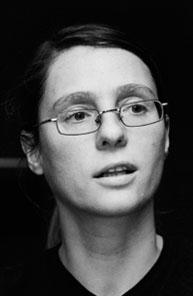 © Antye Greie
© Antye Greie
AGF aka antye greie is a musician, producer, author and artist living in Berlin. Born and raised in East Germany, AGF has been active as a musician since 1990, playing in the German band Laub, as well as performing solo. On her 2001 release Head Slash Bauch (Orthlorng Musork), AGF translated fragments of HTML script and software manuals into a choppy deconstructed pop format. AGF was an artist in residence at Podewil, at the Berlin contemporary center (2001) and composed the sound installation Berlin Klang at the Berlin exhibition at the Sonar Festival in 2000.
6
Jun
Prix Ars Electronica | posted by CorneliaSulzbacher | at 11:00:00
Tereza Szente - Jurymitglied "u19 - freestyle computing"
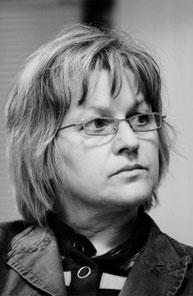 © Norbert Artner
© Norbert Artner
Tereza Szente was born in 1958 in Rumania, and studied visual media design, graphic design and photography at the Linz University of Art. She teaches at various educational institutions (Linz University of Art, Hagenberg Technical College) where she specializes in visual communication and multimedia. At the Linz University of Art, Szente is also working on developing a Web-based online system for modular elementary training in digital media for designers, and holds continuing professional education seminars in media technology and didactics.
6
Jun
Prix Ars Electronica | posted by CorneliaSulzbacher | at 09:15:00
Yuko Nexus 6 - Jury Member "Digital Musics"
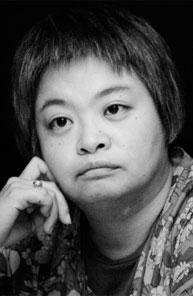 © Norbert Artner
© Norbert Artner
Yuko Nexus 6, born 1964, attended Kansai University in Osaka, Japan and holds a B.A. Degree in Sociology. She has frequently performed in Asia, Canada and the US. She has been a part-time lecturer at Chukyo University sinca 2001 and a part-time lecturer at Nagoya University of Arts and Sciences since 2002. Kitamura has been a member of Women’s Performance Art Osaka since 2001.
5
Jun
Prix Ars Electronica | posted by CorneliaSulzbacher | at 09:00:00
Elisabeth Schimana - Jury Member "Digital Musics"
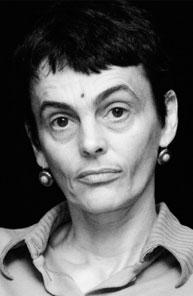 © Norbert Artner
© Norbert Artner
Elisabeth Schimana was born in 1958 in Innsbruck and works as a no-singer, -performer, -composer, -radio artist and artistic process manager in an electronic environment. She studied at Vienna’s University of Music and the Performing Arts and at the Universities of Vienna, York and Keele. Schimana began working on the “Klangnetze” (sound networks) project in 1994 and has been its regional director in Lower Austria since 1998. That same year, she received the Province of Lower Austria's Award of Recognition for Music. Since 1997, Schimana has been working together with the Theremin Center in Moscow.
In 2000, Schimana was named a member of the board of directors of V:NM – Society for the Advancement of New Music. The following year, she was granted a postgraduate grant by the Province of Lower Austria/Art Section.
In 2002, Schimana spent a term as a trainee at the Moscow Cultural Forum, founded Salon Elise, served as guest composer at the Institute for Electronic Music in Graz and was guest artist at Werkstadt Graz.
In 2005, she was involved in setting up the Institute for Media Archeology, which she now heads.
4
Jun
Prix Ars Electronica | posted by CorneliaSulzbacher | at 09:15:00
Sabine Hirtes – Computer Animation / Visual Effects Juror
Sabine Hirtes studied visual communication at Aachen Technical College und completed a course of training in computer graphics as well as an introduction to the Macintosh and PC systems and Alias 3D software at Munich’s Media Digital Institute. She went on to teach creative computer animation at the POLYGON Institute in Ludwigsburg, and worked as art director and operator using FGS 4500, TDI Explore (on a Silicon Graphics workstation) and Mac running Freehand, Photoshop, Pagemaker, MacroMind Director and Lumena software.
In April 1993, Hirtes was named assistant for digital image design at the Film Academy of Baden-Württemberg under Prof. Thomas Haegele, supervised student projects and gave instruction on 2D and 3D software (Softimage, Explore, AliasIWavefront, Matador Cineon, Flint, Harry, Paintbox, Avid Media Suite Pro). On the side, she was active as a freelance 2D and 3D computer graphics designer. In 1992 and 1994, she participated in workshops on MacroMind Director 3D organized by the Goethe Institute in the Ivory Coast.
In 1996, Hirtes worked together with Film Academy students to organize Jill Scott’s "Digital Body / Automata" installation for the Media Museum in Karlsruhe.
The following year, she transferred to the Department of Graphic Media at the ZKM – Center for Art and Media Karlsruhe, where she was responsible for video studies and the computer animation program. At the same time, she was working together with a number of different artists (using Softimage, Maya, Media 100, Inferno, analog video editing) and co-produced (with Thomas Zeitlberger) Kirsten Geisler’s installation “Dream of Beauty 2.0.” The following year, Hirtes once again took part in a Goethe Institute workshop, this time at the Cairo Film Institute on the subject of Softimage. In Cairo, she then worked for the video department of Al Ahram, produced TV clips (MIT Maya 2.0) and taught at the Cairo Film Institute.
In 2000, Hirtes returned to Germany and took a temporary teaching position at the Bauhaus University in Weimar (post-production and special effects). In July 2000, she was made art director at Charamel in Cologne, where she was responsible for character development and the implementation of real-time and Internet applications (Max, Filmbox, the company’s proprietary software) as well as for video projects (DPS, Combustion).
Finally, in 2002, Hirtes transferred to the Film Academy of Baden-Württemberg’s Department of Animation, Visual Effects and Digital Post-production as animation software specialist. She teaches introductory courses in 3D and 2D software (3ds Max, Maya, Combustion, Fusion, Shake, Flame, Avid DS, Adobe Video Collection), advises students on the implementation of their projects and works on extramural collaborative efforts.
3
Jun
Prix Ars Electronica | posted by CorneliaSulzbacher | at 17:00:00
Christopher Lindinger - Jury Member "u19 - freestyle computing"
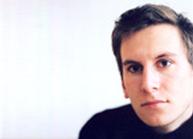 © Ars Electronica Center
© Ars Electronica Center
Christopher Lindinger studied computer science at the University of Linz and cultural management in Salzburg. He has worked as a researcher in the field of scientific visualization and as a freelance developer in the entertainment industry. Lindinger has worked for Ars Electronica since 1997, and is currently head of the Ars Electronica Futurelab’s Department of Research and Innovation. He also teaches at universities in Austria, Germany and Great Britain.
3
Jun
Prix Ars Electronica | posted by CorneliaSulzbacher | at 13:30:00
Naut Humon - Jury Member "Digital Musics"
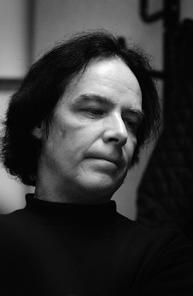 © Naut Humon
© Naut Humon
He is the director of operations for the RECOMBINANT MEDIA LABS in San Francisco. This network of A/V based actions houses the Surround Traffic Control Cinesonic system for performance exhibitions and international residencies. He is also producer and curator for the Asphodel label along with his own projects for speaker-screen installations.
3
Jun
Prix Ars Electronica | posted by CorneliaSulzbacher | at 13:30:00
Shuzo John Shiota - Jury Member "Computer Animation / Visual Effects"
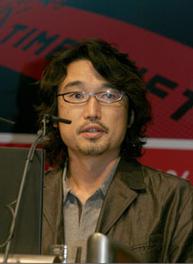 © Shuzo Shiota
© Shuzo Shiota
President/CEO, Executive Producer Shuzo, born in Hyogo prefecture Japan, moved to California when he was 6 years old where he spent the next 9 years of his life. He finished his education in Japan, majoring in International Law at Sophia University. He began his career working for Nippon Steel Corporation, the largest steel firm in Japan, where he specialized in business and market planning in the newly found Information Technology Division.
After leaving Nippon Steel, he worked as an independent business consultant, where he met Toshifumi Kawahara, founder of Polygon Pictures. Upon Toshi’s behest, Shuzo took initiative in starting up Dream Pictures Studio (DPS), a joint venture between Namco, Sony Computer Entertainment, and Polygon Pictures. After the closure of DPS, Shuzo joined Polygon Pictures (Polygon) in 1999, and spear headed the company’s transition from a boutique studio to a full-capacity animation services studio. Polygon now houses 60 artists, and is renowned worldwide for its animation prowess as well as for its efficient production pipeline. Polygon also boasts its ability in creating original characters and content. Its star creation Rocky & Hopper has amassed over 140 million USD in merchandise sales to date.
Shuzo’s produce credit include award winning short subjects “Crocotires: traction AAA”, “Polygon Family Episode 2”, the TV series “Mr.Digital Tokoro”, which was nominated for the Annies in 2001. Shuzo was appointed president and CEO of Polygon in June 2003. He is also a jury member for Prix Ars Electronica 2003 & 2004, as well as SIGGRAPH 2004.
31
May
Prix Ars Electronica | posted by CorneliaSulzbacher | at 09:15:00
Rick Sayre - Jury Member "Computeranimation / Visual Effects"
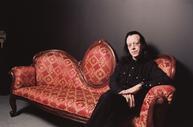 © Rick Sayre
© Rick Sayre
Rick Sayre joined Pixar Animation Studios in 1987. He developed warping, painting, image processing and shading tools, and served as Technical Director and production software developer as the studio began commercial production. His feature credits include Toy Story, Toy Story 2, A Bug's Life (for which he was nominated for a BAFTA for Visual Effects), Monsters, Inc. and The Incredibles. Rick has also been involved extensively in theatre and interactive art, including a collaboration with Chico MacMurtrie for the Prix Ars Electronica in 1991, and drew from this experience to develop an innovative animation input device, for which he received a Sci-Tech Academy Award. He welds to relax.
30
May
Prix Ars Electronica | posted by CorneliaSulzbacher | at 10:00:00
Sirikit Amann - Jury Member "u19 - freestyle computing"
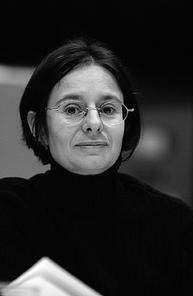 © Norbert Artner
© Norbert Artner
Sirikit Amann was born in 1961 in Hohenems, Austria, and studied political science, theater and economics in Vienna, Munich and Boston. Her 1987 doctoral thesis (Vienna) was entitled “Austro-fascist Cultural Policies,” and she has spoken widely on this subject.
Since the mid-‘80s, Sirikit Amann has been conceptualizing and organizing new media productions. In 1987 at the ÖKS (Austrian Cultural Service, since 2004 a part of KulturKontakt Austria), she began to concentrate her efforts on the creative application of new media and ICT. Since the birth of her daughter, she has been involved both in Austria and abroad in selected projects focusing on new media in art and culture with special emphasis on e-learning, and she has written and spoken about many aspects of this topic.
29
May
Prix Ars Electronica | posted by CorneliaSulzbacher | at 17:00:00
Turning Candy into a Prix Ars Electronica Award of Distinction
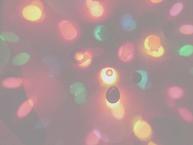 ©
© 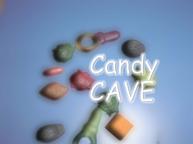 ©
©
Julius Paul Lugmayr likes candy, light, color and creative software, and he’s managed to work all of them into his remarkable light sculpture.
By experimenting with different gadgets, the 11-year-old boy from Linz got the idea of using his computer, a video camera, two small 12-volt beamers and the results of some tinkering in the workshop to design a software-controlled light sculpture that resembles a glowing, constantly changing planet of candy.
To achieve this, the beamers are used to project a specially-prepared film onto a glass globe (with a hole in it so it can also be viewed from inside). When you stick your head into the globe, you experience being at the center of a candy wonderland!
Wunderwelt Candy CAVE
Julius Lugmayr
For details about the Prix winners, click here
29
May
Prix Ars Electronica | posted by CorneliaSulzbacher | at 15:00:00
Politics from a 10-Year-Old’s Point of View
It’s never too early to cultivate an interest in politics, as 1C students from Vienna’s Stubenbastei High School have made abundantly clear.
In their 7-minute-long animated film entitled "Trick und Politik," the youngsters take positions on current issues as well as on individual politicians. A wide variety of movie tricks and special effects are interwoven into a harmonious cinematic whole. The use of a collage technique is meant to evoke associations with daily newspapers and media reportage in general. The jury rewarded this effort with an Award of Distinction.
Trick und Politik
1C BRG Stubenbastei
For details about the Prix winners, click here
29
May
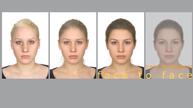 © Irene Kriechbaum
© Irene Kriechbaum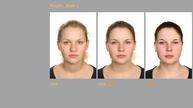 © Irene Kriechbaum
© Irene Kriechbaum
Faces come in infinite varieties and each one unique. Not even identical twins are identical!
Timelkam resident Irene Kriechbaum’s “Faceology” project sought to come up with the “average face” of her female classmates. She began with a series of head shots and then morphed together individual facial features of particular girls. The end result was the class’ “average face.”
Kriechbaum then proceeded to process the individual photos into a video. The result of displaying a rapid-fire sequence of the individual faces is that they end up blending and merging. Rhythm and speed thus open up a completely new way of looking at faces.
Faceology
Irene Kriechbaum
For details about the Prix winners, click here
28
May
Four students at Kirchdorf High School harnessed their knowledge and technical skills on behalf of environmental protection. Now, Prix Ars Electronica is recognizing this effort with an Award of Distinction.
The students constructed a robot fish that can carry out several different underwater research tasks: collect water samples, take readings of the water’s temperature, clarity and depth, and also do underwater photography. The students have been upgrading their project on an ongoing basis: reworking the design, doing some reprogramming and carrying out tests under actual conditions in the Klaus Reservoir.
Robofisch
Ralph Aichhorn, Katharina Greul, Felix Gruber, Fabian Guschelbauer / Robogreiner
For details about the Prix winners, click here
Blog Autoren:
Maria Hieslmayr Cornelia Sulzbacher Wolfgang Bednarzek Gerda Hinterreiter Didi Offenhuber Beta Lounge Artists Sonja Meller StWSt denCity.net
Suche:
Kategorien:
Conferences Animation Festival Events, Concerts & Performances Campus Exhibitions e-lobby Prix Ars Electronica
Recent Posts:
Photographs of the 2006 Festival Media lab thanks! Ars Electronica Center FM4 Live from Ars Electronica in Linz
Archiv:
Posts 40 - 20 Posts 20 - 0


